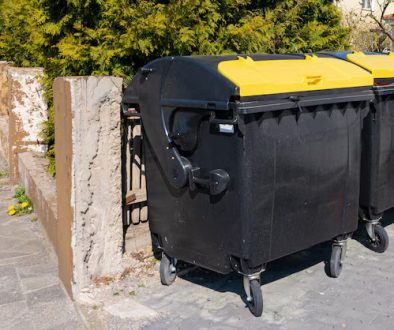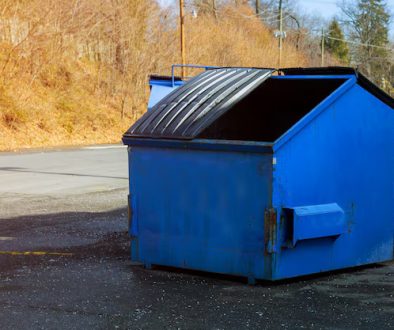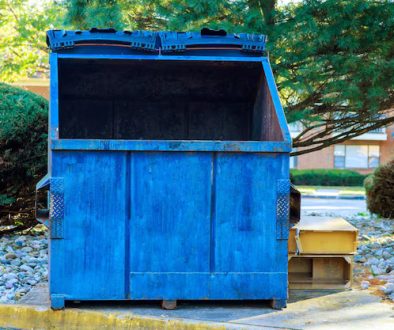Recycling rubbish at home is a simple yet effective way to help the environment. By recycling, we can reduce the amount of waste that ends up in landfills, conserve natural resources, and save energy. With a bit of planning and awareness, everyone in the household can participate in recycling efforts.
The first step in making recycling a habit is understanding what can and cannot be recycled. Many everyday items, such as plastic bottles, paper, and cardboard, are recyclable. However, some items, like certain plastics or contaminated materials, might not be suitable for recycling. Knowing the difference helps in sorting rubbish properly and ensures that recyclables don’t end up in the wrong place.
Creating an easy-to-follow recycling system at home can make the process straightforward and even fun. By setting up clearly labelled bins and educating everyone on what goes where, you can turn recycling into a routine task. Additionally, learning about local recycling guidelines ensures that all your efforts align with community practices, making the entire process more efficient.
This guide will walk you through setting up a recycling system, sorting and cleaning your recyclables, and exploring creative ways to reuse items. These simple steps will make recycling at home easier and more effective, contributing positively to the environment.
Setting Up a Recycling System at Home
Setting up a recycling system at home is the first step to making recycling easy and routine. Start by designating a specific area in your home where you’ll keep your recycling bins. This area should be convenient and accessible to everyone in the household. Kitchens are often a great spot since most recyclable waste is generated there.
Next, get different bins for different types of recyclables. You’ll need at least three bins: one for paper, one for plastics and metals, and one for glass. Label each bin clearly so that everyone knows what goes where. This labelling helps avoid confusion and ensures proper sorting.
Consider colour-coding your bins to make the process even simpler, especially for young children. For example, use a blue bin for paper, a green one for glass, and a yellow one for plastics and metals. Making recycling visual and straightforward encourages everyone to participate more willingly.
If you have outdoor space, set up larger bins or skips that you can transfer your indoor recyclables to. Ensure these are also clearly labelled and easy to access. Regularly empty your indoor bins into the outdoor ones to keep your system running smoothly. With a simple, well-organised system, recycling at home becomes an easy and natural part of your daily routine.
Sorting and Cleaning Your Recyclables
Proper sorting and cleaning of recyclables are crucial to make sure they are effectively processed. Contaminated recyclables can ruin entire batches and make recycling efforts go to waste. Here’s how to sort and clean your recyclables properly:
1. Rinse and Dry: Before placing items in their respective bins, rinse out any food or liquid residue. For example, rinse food cans, jars, and bottles. Let them dry before putting them in the bin. Clean recyclables are less likely to attract pests.
2. Remove Labels and Lids: For items like jars and bottles, remove the labels and lids before recycling. Metals lids can often be recycled separately.
3. Flatten Cardboard: Break down and flatten cardboard boxes to save space in your recycling bin. This makes it easier to store and transport.
4. Separate Different Materials: Some items are made from mixed materials, like a plastic bottle with a metal cap. Separate these components before recycling. Mixed materials can cause problems at recycling facilities.
Sorting different materials correctly ensures that they go to the right place and can be processed efficiently. By taking the time to clean and properly sort your recyclables, you help make the recycling process more effective and contribute to a cleaner, healthier environment.
Creative Ways to Reuse Common Items
Reusing common items at home is a fantastic way to reduce waste and get creative. Many things we might think of as rubbish can have a second life with a bit of imagination. Here are some simple ideas for reusing everyday items:
1. Glass Jars: Instead of throwing away glass jars, use them to store spices, nuts, and other pantry items. They can also make lovely flower vases or candle holders.
2. Old T-shirts: Turn old T-shirts into cleaning rags, tote bags, or even pillow covers. Cutting them into strips to make braided rugs or toys for pets is another fun and useful option.
3. Cardboard Boxes: Cardboard boxes can be transformed into storage bins, playhouses for kids, or even art canvases. Flattened cardboard is also great for garden mulch to keep weeds at bay.
4. Plastic Containers: Plastic containers can serve as plant pots, craft organisers, or small storage bins. They are perfect for holding screws, nails, and other small items in the garage or shed.
5. Wine Corks: Collect wine corks to create coasters, bulletin boards, or keychains. They can also be used as garden markers by sticking them on skewers and writing the plant names on them.
Reusing items not only reduces waste but also saves money and resources. By thinking creatively, you can find new purposes for many things around the house, keeping them out of landfill and giving them a new lease of life.
Understanding Local Recycling Guidelines
Understanding local recycling guidelines is crucial to ensure your efforts are effective and compliant with regional practices. Each area may have different rules about what can be recycled and how items should be prepared.
Start by checking with your local council or recycling programme for specific guidelines. They often provide detailed information about which materials are accepted and any preparation requirements, such as removing lids or rinsing containers.
1. Accepted Materials: Not all materials can be recycled everywhere. Your local guidelines will list which plastics, papers, metals, and glass items are acceptable. Some areas allow for the recycling of more types of plastics and mixed materials than others.
2. Collection Schedules: Know when your recyclables are collected. Some areas have weekly collections, while others might be bi-weekly or monthly. Mark these dates on your calendar to ensure you don’t miss them.
3. Special Handling: Certain items like electronics, batteries, and hazardous waste require special handling and might need to be taken to specific drop-off locations. Follow the guidelines for disposing of these safely.
4. Contamination Rules: Pay attention to what constitutes contamination in your area. This could include leftover food in containers or mixing non-recyclable items with recyclables. Contaminated recyclables can lead to whole batches being sent to landfill.
5. Community Events: Some communities host special recycling events where you can bring items that aren’t usually picked up, like old electronics or large metal objects.
Following local recycling guidelines helps make sure that your recyclables are processed correctly and supports broader community efforts to manage waste efficiently.
Conclusion
Recycling rubbish at home is simpler than you might think. By setting up a designated recycling system, sorting and cleaning your recyclables, and understanding what can be reused, you can make a significant impact on reducing waste. Learning and following local recycling guidelines ensures that your recyclables are handled properly and effectively.
Making recycling a part of daily life contributes positively to environmental conservation and resource management. Every small effort counts, from washing out a can before recycling it to reusing a glass jar for storage. These practices help reduce the strain on landfills and promote a more sustainable way of living.
For those in Staffordshire looking to take their recycling efforts a step further, Enviro Skip Hire offers efficient and reliable services. Find out how we can help you manage your waste and recycling needs with our skip hire in Staffordshire.




